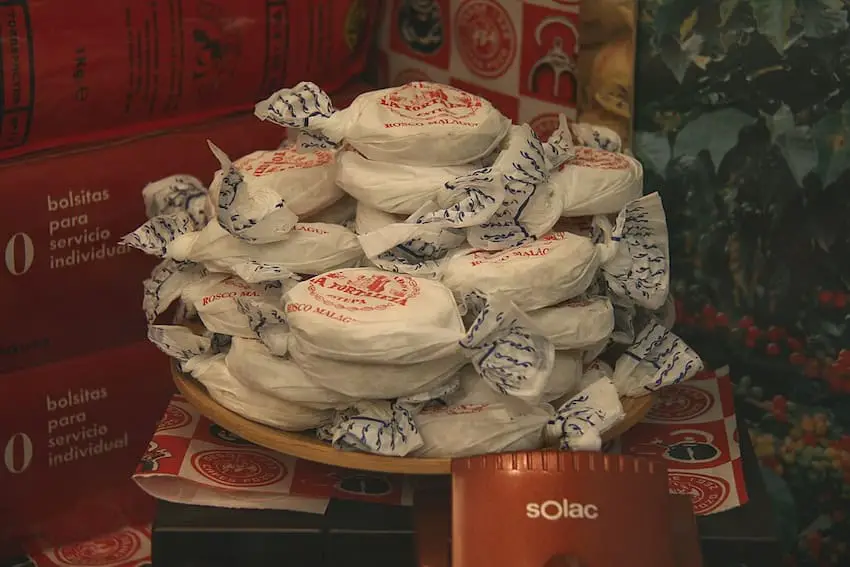It’s Christmastime, time for those traditional, nuttery-buttery, melt-in-your-mouth Mexican recipes that we all love — like polvorones! But how did wedding cookies in Mexico become synonymous with Christmas?
Mexican wedding cookies, also known as polvorones, can be traced back to medieval Arabian culinary tradition, where cookies were made with rich spices, butter, sugar, and nuts. The recipe, and its variations, then traveled the trade routes and made its way to Europe and ultimately to Spain.

The name polvorones comes from the Spanish word polvo, or dust, that is evident in the cookie’s crumbly texture and the powdered sugar that’s used to “dust” them. The cookies became very popular, and the Spanish brought the recipe with them to Mexico with the colonizers in the 16th century. Because they symbolize happiness and unity, they naturally became traditional wedding treats, but they also exemplified joy, and therefore became a perfect sweet to serve at festive occasions, especially Christmas.
The term “Mexican Wedding Cookie” gained traction in the U.S. in the 1950s, when the recipe became a favorite of American cookbooks, replacing the similar Russian Tea Cake (due to Cold War sentiments). It was also given this moniker in the States because it was known for its popularity at Mexican weddings. However, the first known mention of the cookie as “Mexican” appeared in a 1937 issue of American Cookery, meaning the cookie had gained recognition long before they became popular.
The Mexican Wedding Cookie, however, is different in texture than the Russian Tea Cake, due to its higher flour-to-nut ratio, making it more crumbly and sandier to the bite. It also tastes butterier and is often infused with vanilla. Some variations may even include cinnamon and anise. The Tea Cake, however, is denser because the nuts (traditionally, walnuts) in the recipe are finely ground, making the cookie chewy, giving it a pronounced nutty taste.
Once again, these cookies, like so many other foods in Mexico, represent an incredible blending of cultures, that are treasured today for their rich, wonderful flavor and for their symbolism of happiness, unity and joy that they have come to embellish.
Mexican wedding cakes: the recipe

Ingredients:
- ½ Cup (115 g) unsalted butter* (softened) (mantequilla sin sal)
- ½ Cup (115 g) salted butter* (softened) (mantequilla)
- Best Mexican brands: Lala; Gloria; Alpura; Aguascalientes; Flor de Alfalfa.
- ½ Cup (50 g) powdered sugar plus ½ Cup (50 g) for coating (azúcar glas)
- 1 tsp. (4.2 g) vanilla extract* (extracto de vanilla)
- Mexican brands noted for their intense flavor: Villa Vainilla; Vainilla Totonac’s; Molina Vainilla
- 2 Cups (240 g) all-purpose flour
- Use only U.S. flour, available online.
- ½ tsp. (1.5 g) coarse sea salt (sal gruesa)
- 1 Cup (100 g) pecans toasted and finely chopped (nueces pecanas)
Instructions
- Preheat oven to 350 degrees.
- Line a large baking sheet with parchment paper.
Next:
- Combine softened butter, ½ Cup powdered sugar and vanilla and beat until fluffy, about 1-2 minutes.
- Add flour and salt and mix until a dough starts to form.
- Once the flour is about 80% incorporated, add the chopped pecans.
- Mix together, but do not over mix.
- Roll the dough into 1 ½ inch balls and place 2 inches apart on baking sheet.
- Bake for 12-14 minutes, or until the bottoms of the cookies are lightly browned.
- Remove from the oven and let cool for 5 minutes on baking sheet.
- Place cookies on a wire cooling rack to finish cooling.
- In a container with lid, place ½ Cup powdered sugar.
- When cookies are cooled completely, place several in the container at one time. Cover with lid, and gently turn the container to coat the cookies with sugar.
- You can repeat this step for additional coating.
Disfruta!
Deborah McCoy is the one-time author of mainstream, bridal-reference books who has turned her attention to food, particularly sweets, desserts and fruits. She is the founder of CakeChatter™ on FaceBook and X (Twitter), and the author of four baking books for “Dough Punchers” via CakeChatter (available @amazon.com). She is also the president of The American Academy of Wedding Professionals™ (aa-wp.com).
